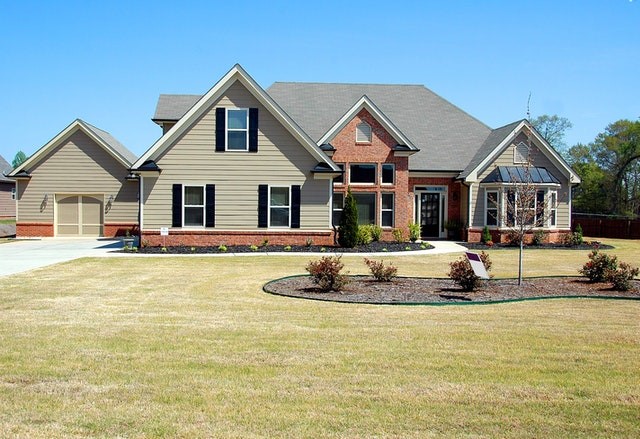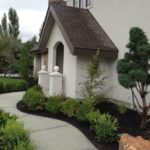 The exterior of a home is like the cover of a book. Rightly or wrongly, it is an indication of what people can expect to find inside the home. A rental property’s exterior can influence prospective tenants’ decision to rent or not rent the property, says Five Star Property Management.
The exterior of a home is like the cover of a book. Rightly or wrongly, it is an indication of what people can expect to find inside the home. A rental property’s exterior can influence prospective tenants’ decision to rent or not rent the property, says Five Star Property Management.
A significant part of a property’s perceived value is based on what people see when they first approach it. And a big part of that appearance is the home’s landscaping.
Good landscaping can highlight the best things about a property or depreciate them. It should complement, and not conflict, with the overall attractiveness of the property. When planning a property’s landscape, there are things landlords should know.
These are simple rules that help property owners make the most of their landscaping efforts. Following them will allow tenants to derive the most value from the yard and help landlords maintain property renters will love.
Dos of landscaping a rental property
Keep the yard simple and low maintenance.
The simpler the landscaping is, the easier it will be to maintain. Low-maintenance landscaping is more likely to be well looked after. Landlords already have a lot of work making sure a property is in the best possible shape.
A complicated landscape will make excessive demands on their time and add to the owner’s burden. Here are a few suggestions on how to make the landscape easy to maintain:

- Give priority to plants that require very little watering
- Plant densely, and mulch heavily to minimize weed growth
- Avoid turning the soil as much as possible
- Replace some of the turfs with ground covers
- Choose plants that do not require much attention to grow properly
Choose local plants
Foreign plants make a good first impression, but they are a lot of trouble. Local plants are adapted to an area’s climate, and geography; they do not need chemical intervention to maintain healthy growth. They save landlords the money that would have gone into purchasing fertilizers or pesticides and watering the plants. Without assistance, these plants can become established. Using them reduces yard-maintenance time and preserves an area’s biodiversity. They also provide habitats for local wildlife, like birds and butterflies.
Make room for pets
More and more households are acquiring pets. But pet urine and grass do not always combine well. Therefore it may be necessary to designate an area of the yard for pets. Here are important steps to take when doing this:
- Fence off the area or mark it out
- Shield fragile plants by surrounding them with rocks and use large pieces of driftwood to keep pets from specific areas
- Use plants that are sturdy but which do not have burrs, thistles, or thorns.
- Do not use toxic plants. Use safe mulch
- To make it easier for highly mobile pets, such as dogs, create paths throughout the yard
- Cover the pet area with pea gravel or sand pebbles, to make pet poo easier to scoop up
Buy good cheap lawn art
Lawn art does not need to be expensive or elaborate to be attractive. The important thing is that it fits into the overall style and design of a yard. And this can easily be achieved without the need to splurge on expensive art. Using expensive art in landscaping will impact on the amount of care the yard requires. Lawn art that is interesting and pleasant to look at is all that is needed.
Curve it
 A simple and inexpensive way to make a landscape stand out is to curve it. Instead of regular-shaped boxes, curve flower beds to add a bit of elegance to them. Other aspects of the design that may be curved are the driveway and sidewalk. This should be done in a way that flows with the overall theme of the yard.
A simple and inexpensive way to make a landscape stand out is to curve it. Instead of regular-shaped boxes, curve flower beds to add a bit of elegance to them. Other aspects of the design that may be curved are the driveway and sidewalk. This should be done in a way that flows with the overall theme of the yard.
Don’ts of landscaping a rental property
Do not personalize it
A rental property’s landscape should appeal to a wide variety of people. Landlords should avoid making their personal preferences the basis for designing the landscape. Themes should be neutral. This means using colors with wide appeal; white, grey, silver, black, brown, or green. Neutral colors blend easier with other features of the landscape.
Do not use one layout or overdevelop it
Getting a perfect fit for the landscape does not always happen the first time. To make the layout easier to change or adapt, plants that are easy to move or replace should be used. When doing this, care should be taken to avoid high maintenance items; as far as possible, use evergreens and colorful perennials.
Do not use a lot of pavement
Keep the proportion of impervious surfaces in the landscape to a minimum. Too much pavement leads to flooding as water accumulates around paved areas. Paved surfaces also increase pollution and the temperature of the ambient area. In place of pavements, use permeable pavers or gravel.










